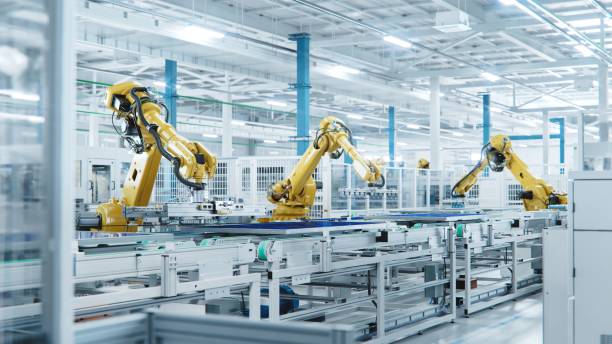Practical skill pathways for automated factory operators
Automated factories require operators who combine hands-on skills with system-level understanding. This article outlines clear, progressive pathways for operators to develop competencies in automation, simulation, maintenance, diagnostics, and robotics. It describes structured onboarding, apprenticeships, credentialing, and practical upskilling approaches that align with production reliability and lean practices.

How does automation change operator competencies?
As factories adopt automation, operators move from purely manual tasks to roles that emphasize oversight, decision-making, and system optimization. Key competencies include understanding control logic, interpreting diagnostics data, and knowing when to intervene versus letting automated systems execute. Operators should be familiar with common automation platforms, safety interlocks, and basic PLC concepts so they can support uptime and reliability while collaborating with engineering and maintenance teams.
What role does simulation play in onboarding?
Simulation tools let operators practice procedures and troubleshoot scenarios without risking production. Virtual commissioning and digital twins replicate process flows, enabling safe training on sequence control, fault injection, and response timing. Simulation shortens onboarding by building pattern recognition for alarms and diagnostics, and it supports cross-training for operators who need to learn multiple machines or lines. Incorporating simulation into structured onboarding increases confidence and reduces first-shift error rates.
How can operators pursue upskilling and credentials?
Upskilling combines classroom instruction, guided practice, and competency assessments. Apprenticeships remain a practical route, pairing on-the-job experience with formal modules that cover PLCs, robotics fundamentals, and troubleshooting techniques. Credentials from recognized vocational providers or industry consortia can document skill levels in maintenance, diagnostics, and lean methods. Modular micro-credentials let operators demonstrate discrete competencies—such as ladder logic reading or safety PLC fundamentals—making career progression more transparent.
What maintenance and troubleshooting skills are essential?
Routine maintenance and effective troubleshooting reduce downtime and support reliability goals. Operators should learn predictive and preventive maintenance basics, how to use diagnostic tools, and techniques for root-cause analysis. Key tasks include reading error logs, isolating electrical and mechanical faults, and performing basic repairs or adjustments within scope. Training should emphasize clear documentation, escalation criteria for complex failures, and collaboration with maintenance technicians to close feedback loops.
How do robotics and PLCs fit into daily operations?
Robotics and PLCs form the backbone of many automated lines; operators need working knowledge of both. For robotics, that includes safety zones, end-of-arm tooling considerations, and simple program edits or teach pendant use. For PLCs, operators should understand I/O status, basic logic flow, and how to interpret ladder diagrams or function block indicators. Familiarity with these systems helps operators perform diagnostics, execute controlled restarts, and communicate effectively with automation engineers.
How do lean and reliability shape operator training?
Lean principles focus operator training on waste reduction, standardized work, and continuous improvement. Reliability-centered training prioritizes uptime, preventive actions, and failure-mode awareness. Combining lean and reliability approaches leads to routines such as standardized shift handovers, visual controls for machine status, and operator-led kaizen events to address recurring issues. Training that integrates these frameworks encourages operators to contribute to process improvements while maintaining consistent performance.
Conclusion
Practical skill pathways for automated factory operators blend foundational technical knowledge with hands-on practice, structured mentorship, and measurable credentials. Simulation and apprenticeships accelerate competency development, while targeted training in maintenance, diagnostics, robotics, and PLCs equips operators to support reliability and lean objectives. Progressive upskilling programs that include assessments and real-world practice create a workforce capable of sustaining automated production environments without compromising safety or quality.






